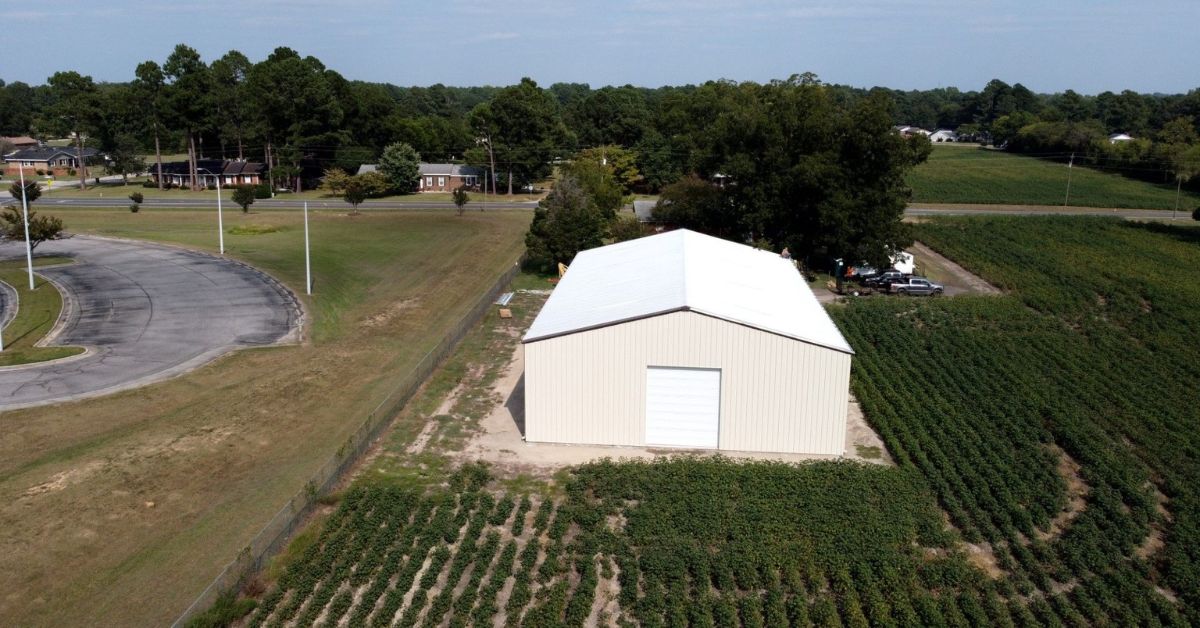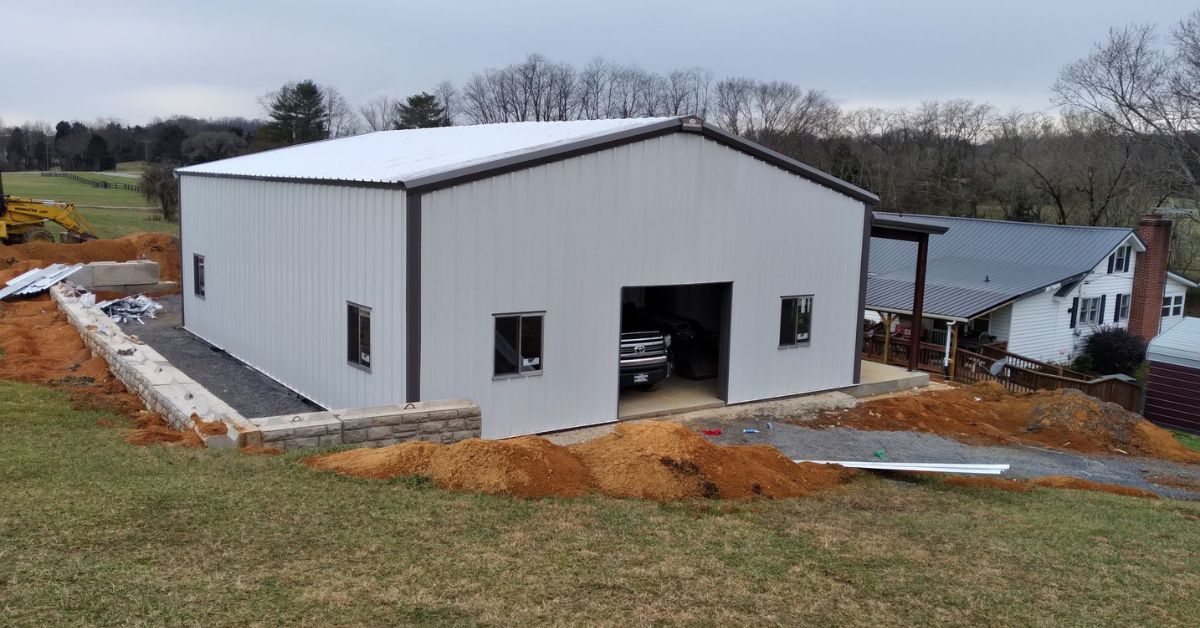4 Types of Barn Roofs and Which To Choose
4 Types of Barn Roofs and Which To Choose

When you’re planning to build a barn, every detail matters, from the foundation to the rafters. One of the most critical decisions you’ll make is choosing the right roof. The part of your barn not only protects your livestock, equipment, and supplies from the elements but also defines the barn’s overall style and functionality.
With so many options available, each with its own set of benefits and drawbacks, making the right choice can feel overwhelming. That’s why we’ve put together this guide to help you explore the most common types of barn roofs, helping you decide which to choose.
1. Gable Roof
Gable roofs are perhaps the most classic and recognizable roof style, featuring a simple triangular shape with two sides sloping down from a central ridge. This straightforward design has been a staple in construction for centuries for good reason. Its simplicity makes it cost-effective to build, as it requires fewer materials and less complex labor than other designs. The steep pitch is excellent at shedding rain and snow, helping prevent water damage and structural strain in areas with moderate to heavy precipitation.
However, the traditional gable roof design offers limited overhead space, which can be a drawback if you need a spacious loft for hay storage or other uses. These roofs can also be less resistant to high winds compared to other styles, particularly if you didn’t brace the framing properly. Still, a gable roof is an ideal, all-around choice for general-purpose barns in regions with moderate weather conditions.
2. Monitor Roof
A monitor roof is another classic roof type for barns. It offers a unique, highly functional design characterized by a raised center section that runs along the length of the roof ridge. This raised portion, often lined with windows or vents, is the defining feature. The main benefit of a monitor roof is superior ventilation and natural light. The windows allow sunlight to flood the interior, while the vents let hot air escape, creating a cooler, more comfortable environment for livestock.
This design is particularly beneficial for horse barns or any agricultural building in a hot climate. The improved airflow helps maintain a healthy atmosphere for animals by reducing moisture and heat buildup. The downside is that the complex structure leads to higher construction costs and a longer build time. If your priorities are ventilation and light, and your budget allows, a monitor roof is an excellent investment.

3. Single-Slope Roof
The single-slope roof, sometimes known as a shed roof or lean-to roof, features just one flat surface that slopes from one side of the building to the other. This simple and streamlined design is highly effective for barns where straightforward drainage and modern aesthetics are priorities. The slope directs rainwater and snow away from your barn, reducing the risk of leaks and water buildup. It’s also incredibly cost-efficient, requiring fewer materials and faster assembly time compared to more complex styles.
Single-slope roofs are ideal for structures built next to existing buildings or when maximizing wall height on one side is beneficial—for example, if you plan to add large equipment doors or tall windows. While this type of roof doesn’t provide as much loft space as a gable or monitor design, it delivers excellent value for barns that need to balance simplicity, savings, and performance.
4. Asymmetrical Roof
An asymmetrical roof breaks away from traditional symmetry by featuring two sides of different lengths or pitches. This unique configuration isn’t just about visual interest—it serves distinct practical purposes. The steeper side of the roof can be oriented to shed snow or withstand prevailing winds more effectively, while the gentler slope can allow for easier equipment access or expanded covered storage.
This design offers flexibility that you can tailor to the specific requirements of your site and operation. An asymmetrical roof may also enhance ventilation or natural lighting, depending on how you position windows and vents. It does present a bit more complexity to design and construction, but for many, the added customization is well worth the investment.

How to Choose the Right Roof for Your Needs
With a better understanding of the types of barn roofs available, it’s time to choose which is right for you. Picking your ideal roof comes down to a few key factors:
- Assess Your Climate: Consider your local weather patterns. Do you get heavy snow, high winds, or intense heat? Your roof needs to withstand whatever Mother Nature throws at it.
- Define Your Purpose: Think about how you’ll use the barn. Do you need a massive hayloft for storage, or is superior ventilation for livestock your top priority?
- Set Your Budget: Your budget will influence your choice of materials and the complexity of the design. Balance your upfront construction costs with potential long-term maintenance expenses.
- Prioritize Durability: Consider how much maintenance you’re willing to perform. Some roof types require more upkeep than others to ensure their longevity.
- Match Your Style: Finally, decide on the look you want to achieve. Whether you prefer a timeless, traditional barn or a sleek, modern structure, there’s a roof style to match your vision.
No matter which roof you choose, partnering with an experienced builder is key to ensuring your barn is built to last. If you decide to partner with Arco Building Systems for your farm building, we’d recommend a gable or monitor roof. These work best for most metal agricultural structures, but any of the choices listed here should suffice.
Roof Maintenance Tips
Once you have your barn roof installed, maintaining it will be essential for maximizing its lifespan and safeguarding everything housed within your building. Start by scheduling regular roof inspections at least twice a year, especially following severe weather events. During an inspection, look for signs of wear such as rust, loose screws, cracked seals, or damaged panels. Catching minor issues early can prevent them from turning into major repairs down the road.
Keeping the roof surface clean is another key step. Remove debris like leaves, branches, and moss, as they can trap moisture and accelerate deterioration. For metal roofs, check for areas where coatings may have worn thin and reapply paint or sealant as needed to protect against corrosion.
Promptly addressing any damage is crucial. If you spot leaks, missing fasteners, or dented sections, address them right away to prevent water intrusion or structural problems. For barns with skylights or ventilation fixtures, make sure the surrounding seals remain intact to prevent drafts or water seepage.
By staying proactive with your maintenance routine, you will extend the service life of your barn roof, minimize costly repairs, and ensure your structure continues to perform as intended for years to come.
